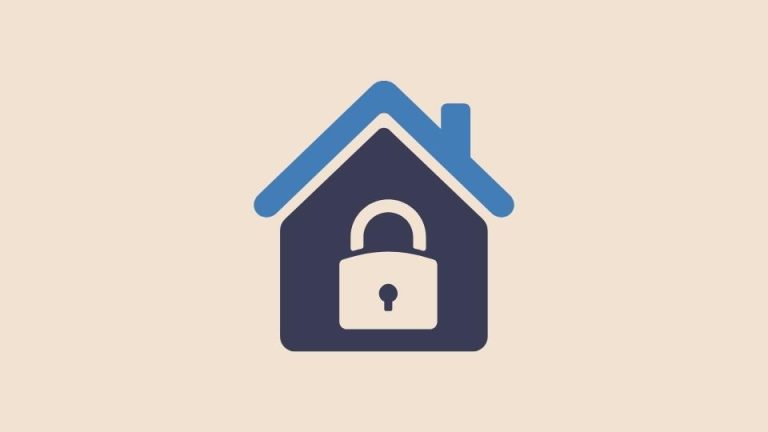Best Way to Collect Rent as A Landlord
Collecting rent is an essential part of being a landlord, as it is the primary source of income for rental properties. As a landlord, it’s important to understand and follow the relevant laws and regulations governing rent collection and choose the best method for collecting rent from tenants.
There are several factors to consider when choosing the best way to collect rent, including the convenience and ease of payment for tenants, the reliability and accuracy of the payment method, and the potential for legal complications. It’s also important to consider the specific needs of the landlord and tenants, as well as any state or local laws that may apply.
In this article, we will explore the different methods of rent collection, the pros and cons of each method, and other considerations for choosing the best way to rent as a landlord. By understanding the options and factors involved, landlords can decide on the best way to collect rent for their properties.
General Overview of The Best Way to Collect Rent as A Landlord

Landlords can use several common methods, including in-person payment, online payment, and automatic withdrawal. Each method has its own benefits and drawbacks, and the best way for a landlord will depend on their specific needs and circumstances.
Common Methods of Rent Collection
In-person rent collection involves accepting rent payments in person, either at the rental property or at another location. This method allows for personal interaction between the landlord and tenant and allows the landlord to inspect the rental property visually. However, in-person rent collection also carries the risk of late or missed payments and the potential for disputes or misunderstandings.
Online rent collection involves setting up an online payment system, such as a website or app, where tenants can pay electronically. This method can be convenient for tenants, who can make payments from anywhere with an internet connection. However, online rent collection also risks technical issues or security breaches.
Automatic rent withdrawal involves setting up a system where rent payments are automatically deducted from the tenant’s bank account on a predetermined schedule. This method can be convenient for both landlords and tenants, as it eliminates the need for the tenant to remember to make payments manually. However, automatic rent withdrawal also risks errors or issues with the withdrawal process.
In-Person Rent Collection
is a common method for landlords to collect rent from tenants. To handle in-person rent collection, landlords can set up a system for accepting payments and tracking receipts. This can involve establishing a specific location and schedule for getting rent payments, as well as providing clear instructions to tenants on how to make payments.
How to Handle In-Person Rent Collection
One Way to track receipts is to use a physical rent book or ledger, where the landlord can record each rent payment and the date it was received. This can provide a written record of the rental property’s payment history and be useful in case of any disputes or misunderstandings.
The main advantage of in-person rent collection is the opportunity for personal interaction between the landlord and tenant. This can allow the landlord to address any concerns or issues that the tenant may have and provide an opportunity for the landlord to conduct a visual inspection of the rental property.
Pros and Cons of In-Person Rent Collection
However, in-person rent collection also carries some drawbacks. One of the main drawbacks is the risk of late or missed payments, as the tenant may forget to make a payment or be unable to make a payment on the designated date. This can lead to financial loss for the landlord and potential legal complications if the tenant fails to pay the rent.
Overall, in-person rent collection can be a useful method for collecting rent, but it’s important for landlords to consider the potential risks and drawbacks carefully and to establish clear procedures and policies for accepting and tracking rent payments.
Online Rent Collection
Setting up An Online Payment System
For online rent collection, landlords can set up an online payment system, such as a website or app, where tenants can make rent payments electronically. To set up an online payment system, landlords can choose a platform that offers the features and security they need and establish rules and procedures for tenants to follow when making payments.
Pros and Cons of Online Rent Collection
One advantage of online rent collection is the convenience for tenants. They can make rent payments from anywhere with an internet connection, and they don’t have to worry about making a physical trip to the rental property or other designated location to make a payment. This can be particularly useful for busy tenants or who live far from the rental property.
However, online rent collection also carries some drawbacks. One of the main drawbacks is the potential for technical issues or security breaches. If the online payment system experiences downtime or other problems, tenants may be unable to make rent payments, which can lead to late or missed payments. Additionally, personal or financial information can be compromised if the online payment system is not secure.
Overall, online rent collection can be a convenient and efficient method for collecting rent. Still, it’s important for landlords to consider the potential risks and drawbacks carefully and to choose a reliable and secure platform for their online payment system. Landlords should also establish clear rules and procedures for tenants to follow when making rent payments online.
Automatic Rent Withdrawal
Setting up Automatic Rent Withdrawal
Automatic rent withdrawal is a method where rent payments are automatically deducted from the tenant’s bank account on a predetermined schedule. To set up automated rent withdrawal, landlords must obtain the necessary consent from the tenant and establish a withdrawal schedule that works for both the landlord and the tenant.
Pros and Cons of Automatic Rent Withdrawal
One advantage of automatic rent withdrawal is the ease of payment for tenants. They don’t have to worry about remembering to make rent payments manually, as the payments are automatically deducted from their bank account on the designated date. This can help ensure that rent is paid on time and eliminate the risk of late or missed payments.
However, automatic rent withdrawal also carries some drawbacks. One of the main drawbacks is potential errors or issues with the withdrawal process. If the tenant’s bank account needs more funds to cover the rent payment, the withdrawal may be accepted, which can lead to late or missed payments. Additionally, any errors in the withdrawal process, such as incorrect account information or withdrawal amounts, can cause issues for both the landlord and tenant.
Overall, automatic rent withdrawal can be a convenient and reliable method for collecting rent, but it’s important for landlords to consider the potential risks and drawbacks carefully and to establish a clear and accurate withdrawal schedule. Landlords should also ensure they have obtained the necessary consent from the tenant and have the correct account information for the tenant’s bank account.
Other Considerations for Rent Collection
In addition to the methods of rent collection discussed above, there are several other considerations and factors to consider when choosing a rent collection method. These include:
Security
Collecting rent in person or by mail carries the risk of lost or stolen payments, while online rent collection methods can be more secure. You may consider using a secure online platform that offers fraud protection and other security features.
Convenience
Both you and your tenants will want a rent collection method that is convenient and easy to use. For example, an online platform may be the best option if your tenants prefer to pay rent electronically.
Cost
Some rent collection methods may be more expensive than others, particularly if they involve fees or charges for processing payments. You can compare the costs of different ways and choose one that is cost-effective for both you and your tenants.
The Type of Tenancy Agreement
As mentioned above, the type of tenancy agreement you have with your tenants will affect the terms of the rent collection, including the amount of rent due, the frequency of payments, and any late fees or penalties.
State or Local Laws
Rent collection is regulated by state and local laws, which may vary depending on your location. It’s important to familiarize yourself with these laws and ensure you comply with them when collecting rent.
Alternative Arrangements
In some cases, you can make alternative arrangements for rent collection, such as using individual tenancy agreements for each tenant in a multi-unit property or including specific clauses in joint tenancy agreements.
Overall, it’s important to consider all of these factors when choosing a rent collection method and to choose one that is secure, convenient, cost-effective, and compliant with the law.
Conclusion
In conclusion, the best way to collect rent as a landlord will depend on your specific situation and the preferences of your tenants.
Some common methods include collecting rent in person, by mail, or online. It’s important to consider the security, convenience, cost, and compliance with the law when choosing a rent collection method.
Additionally, it’s crucial to understand and follow the relevant state and local laws and regulations and consider the landlord’s and tenants’ needs when deciding.
By considering these factors, you can choose a rent collection method that is effective and efficient for your property and your tenants.






